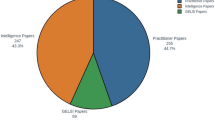Abstract
This study explores the vulnerability of Lithuanian Armed Forces soldiers to hostile intelligence, using Open Source Intelligence (OSINT) to identify the extent of personally identifiable information (PII) disclosure. The research found that soldiers’ social media and sports applications revealed a significant amount of sensitive data, exposing approximately 71% ± 23% of personnel as highly vulnerable to threats such as physical attacks, blackmail, and phishing. Certain privacy measures made data collection more challenging, indicating that clear media usage guidelines could improve security while maintaining soldiers’ social lives. Notably, a substantial amount of information was obtained from individuals connected to, but not in the military, emphasizing the importance of broader social network considerations in security assessments. The study was conducted manually within specific time and network limits, suggesting automation could enhance investigative scope and reduce error margins. The findings highlight the need for military procedures that account for the heightened vulnerability of soldiers and their families and the implementation of measures to mitigate these risks.
Access this chapter
Tax calculation will be finalised at checkout
Purchases are for personal use only
Similar content being viewed by others
References
Army social media guide. U.S. Army, 13 February 2023. https://www.army.mil/SOCIALMEDIA/
Using social media - a guide for military personnel. Ministry of Defence, U.K., 13 February 2023. https://www.gov.uk/government/publications/using-social-media-a-guide-for-military-personnel
Akhgar, B.: OSINT as an integral part of the national security apparatus. Open Source Intelligence Investigation: From Strategy to Implementation, pp. 3–9 (2016)
Bär, D., Calderon, F., Lawlor, M., Licklederer, S., Totzauer, M., Feuerriegel, S.: Analyzing social media activities at Bellingcat (2022). arXiv preprint arXiv:2209.10271
Böhm, I., Lolagar, S.: Open source intelligence: introduction, legal, and ethical considerations. Int. Cybersecur. Law Rev. 2, 317–337 (2021). https://doi.org/10.1365/s43439-021-00042-7
Dixon, S.: Number of global social network users 2017–2027. Statista, 13 February 2023. https://www.statista.com/markets/424/topic/540/social-media-user-generated-content
Dressler, J.C., Bronk, C., Wallach, D.S.: Exploiting military OpSec through open-source vulnerabilities. In: 2015 IEEE Military Communications Conference. MILCOM 2015, pp. 450–458. IEEE (2015). https://doi.org/10.1109/MILCOM.2015.7357484
Emonet, F.: To post or not to post. NCO J. (2020). https://www.armyupress.army.mil/Portals/7/nco-journal/images/2020/June/Social-Media/Social-Media.pdf
Hayes, D.R., Cappa, F.: Open-source intelligence for risk assessment. Bus. Horiz. 61(5), 689–697 (2018)
Kozera, C.A., et al.: Fitness OSINT: identifying and tracking military and security personnel with fitness applications for intelligence gathering purposes. Secur. Defence Q. 32(5), 41–52 (2020)
Lakomy, M.: Assessing the potential of OSINT on the internet in supporting military operations. Bezpieczeństwo. Teoria i Praktyka 3(XLVIII) (2022). https://doi.org/10.48269/2451-0718-btip-2022-3-022
Lasoń, M., et al.: The total defence 21st century.com - building a resilient society. Bezpieczeństwo. Teoria i Praktyka 3(XLVIII) (2022)
Maltby, S., Thornham, H.: The digital mundane: social media and the military. Media Cult. Soc. 38(8), 1153–1168 (2016). https://doi.org/10.1177/0163443716646173
Pellet, H., Shiaeles, S., Stavrou, S.: Localising social network users and profiling their movement. Comput. Secur. 81, 49–57 (2019)
Riebe, T., et al.: CySecAlert: an alert generation system for cyber security events using open source intelligence data. In: Gao, D., Li, Q., Guan, X., Liao, X. (eds.) ICICS 2021. LNCS, vol. 12918, pp. 429–446. Springer, Cham (2021). https://doi.org/10.1007/978-3-030-86890-1_24
Tabatabaei, F., Wells, D.: OSINT in the context of cyber-security. Open Source Intelligence Investigation: From Strategy to Implementation, pp. 213–231 (2016)
Williams, H.J., Blum, I.: Defining second generation open source intelligence (OSINT) for the defense enterprise. Technical report, Rand Corporation (2018). https://doi.org/10.7249/rr1964
Author information
Authors and Affiliations
Corresponding author
Editor information
Editors and Affiliations
Rights and permissions
Copyright information
© 2023 The Author(s), under exclusive license to Springer Nature Switzerland AG
About this paper
Cite this paper
Malakauskis, P., Juozapavičius, A. (2023). Assessing the Vulnerability of Military Personnel Through Open Source Intelligence: A Case Study of Lithuanian Armed Forces. In: Degen, H., Ntoa, S., Moallem, A. (eds) HCI International 2023 – Late Breaking Papers. HCII 2023. Lecture Notes in Computer Science, vol 14059. Springer, Cham. https://doi.org/10.1007/978-3-031-48057-7_27
Download citation
DOI: https://doi.org/10.1007/978-3-031-48057-7_27
Published:
Publisher Name: Springer, Cham
Print ISBN: 978-3-031-48056-0
Online ISBN: 978-3-031-48057-7
eBook Packages: Computer ScienceComputer Science (R0)




